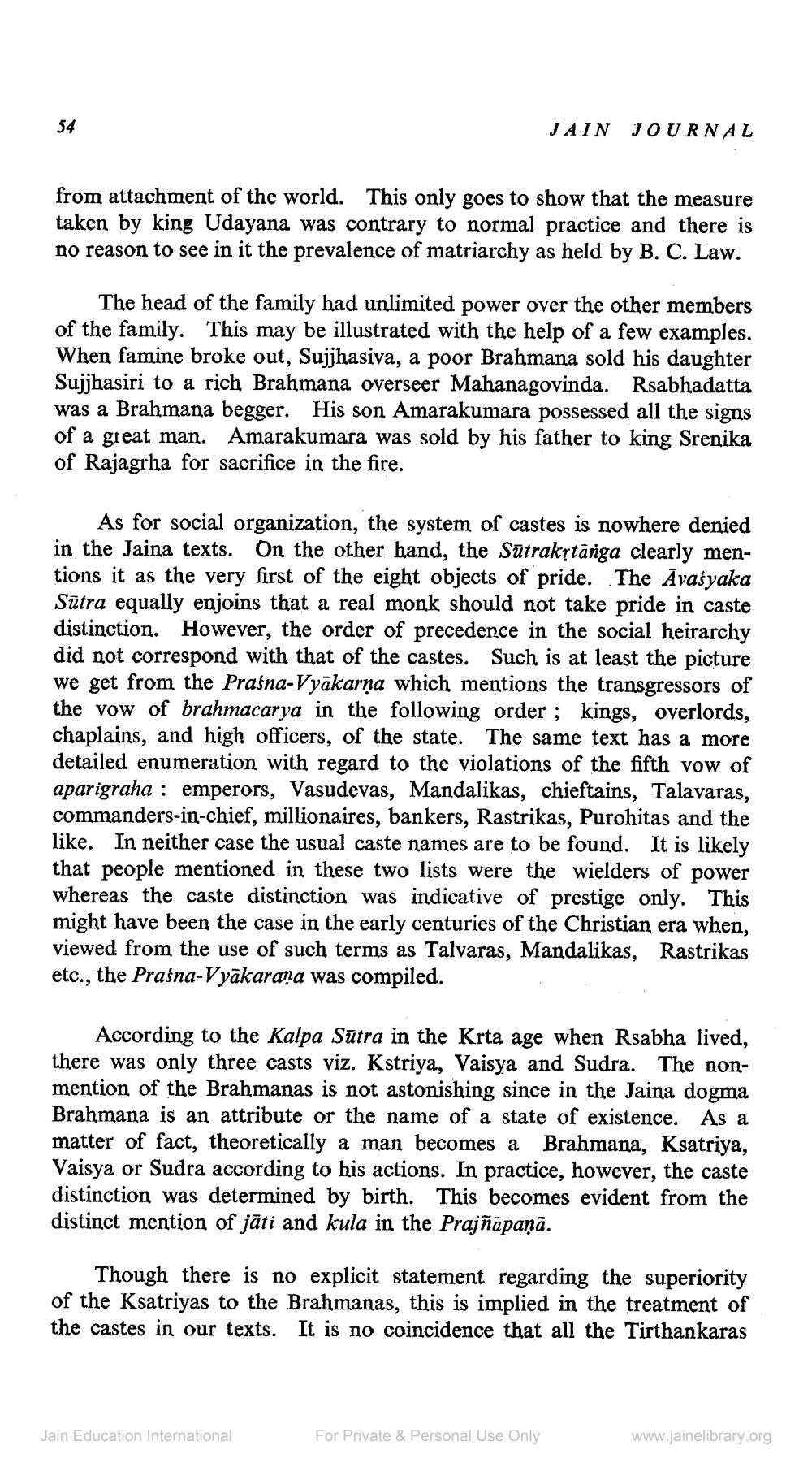________________
54
JAIN JOURNAL
from attachment of the world. This only goes to show that the measure taken by king Udayana was contrary to normal practice and there is no reason to see in it the prevalence of matriarchy as held by B. C. Law.
The head of the family had unlimited power over the other members of the family. This may be illustrated with the help of a few examples. When famine broke out, Sujjhasiva, a poor Brahmana sold his daughter Sujjhasiri to a rich Brahmana overseer Mahanagovinda. Rsabhadatta was a Brahmana begger. His son Amarakumara possessed all the signs of a great man. Amarakumara was sold by his father to king Srenika of Rajagrha for sacrifice in the fire.
As for social organization, the system of castes is nowhere denied in the Jaina texts. On the other hand, the Sūtrakrtānga clearly mentions it as the very first of the eight objects of pride. The Āvašyaka Sūtra equally enjoins that a real monk should not take pride in caste distinction. However, the order of precedence in the social heirarchy did not correspond with that of the castes. Such is at least the picture we get from the Praśna-Vyākarņa which mentions the transgressors of the vow of brahmacarya in the following order ; kings, overlords, chaplains, and high officers, of the state. The same text has a more detailed enumeration with regard to the violations of the fifth vow of aparigraha : emperors, Vasudevas, Mandalikas, chieftains, Talavaras, commanders-in-chief, millionaires, bankers, Rastrikas, Purohitas and the like. In neither case the usual caste names are to be found. It is likely that people mentioned in these two lists were the wielders of power whereas the caste distinction was indicative of prestige only. This might have been the case in the early centuries of the Christian era when, viewed from the use of such terms as Talvaras, Mandalikas, Rastrikas etc., the Praśna-Vyakarana was compiled.
According to the Kalpa Sūtra in the Krta age when Rsabha lived, there was only three casts viz. Kstriya, Vaisya and Sudra. The nonmention of the Brahmanas is not astonishing since in the Jaina dogma Brahmana is an attribute or the name of a state of existence. As a matter of fact, theoretically a man becomes a Brahmana, Ksatriya, Vaisya or Sudra according to his actions. In practice, however, the caste distinction was determined by birth. This becomes evident from the distinct mention of jāti and kula in the Prajñāpaņā.
Though there is no explicit statement regarding the superiority of the Ksatriyas to the Brahmanas, this is implied in the treatment of the castes in our texts. It is no coincidence that all the Tirthankaras
Jain Education International
For Private & Personal Use Only
www.jainelibrary.org




